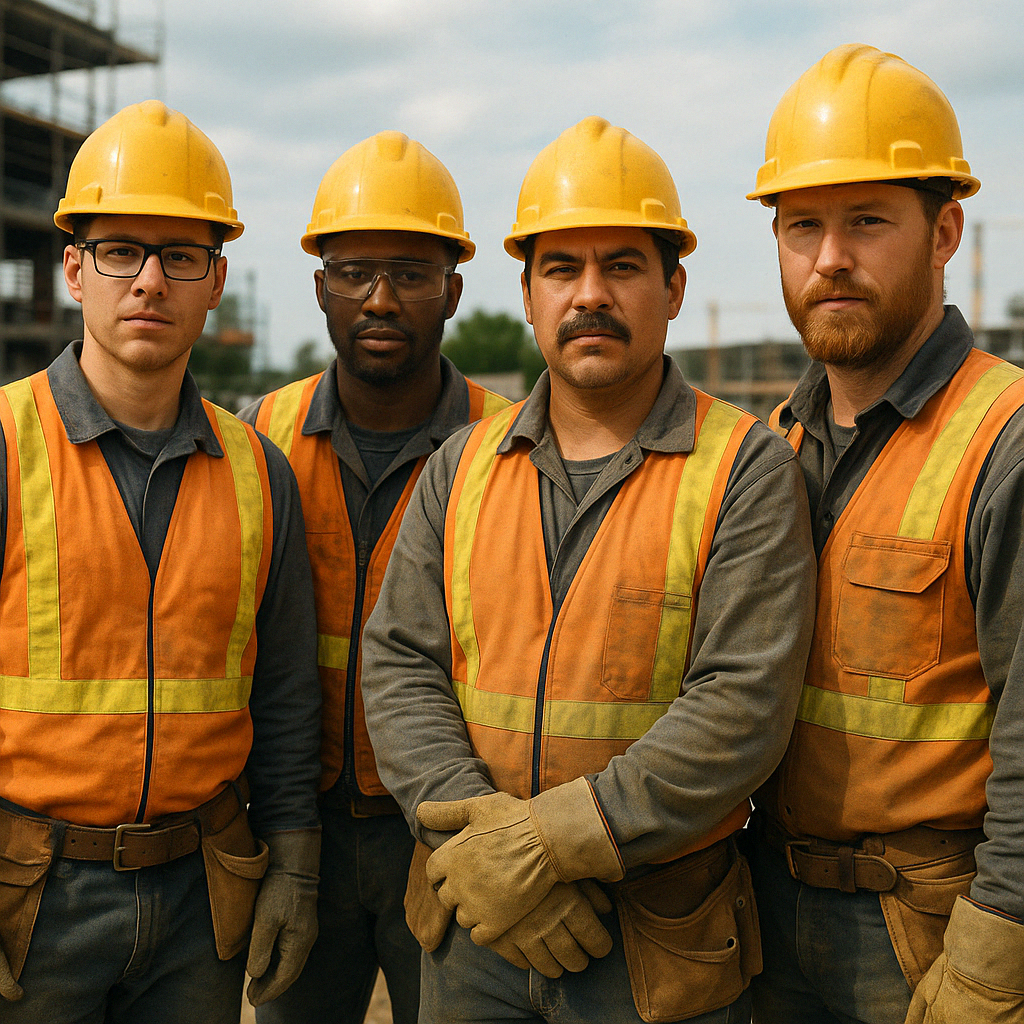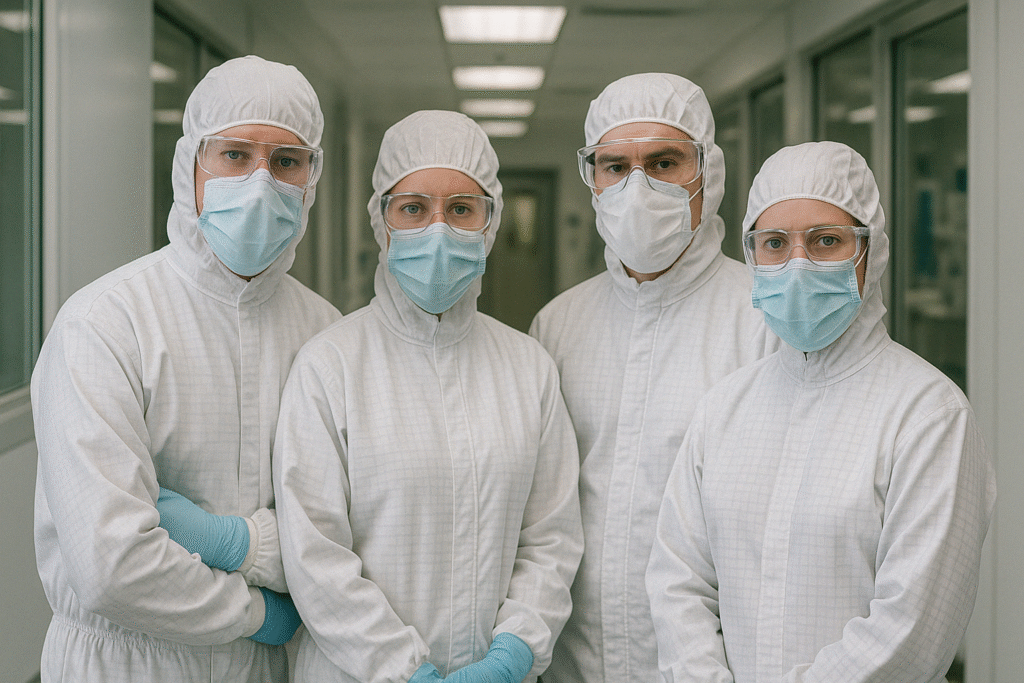- Why PPE Matters in Every Job
- Construction Workers: High-Risk, High-Protection
- Laboratory Technicians: Safety Against Chemical and Biohazards
- Healthcare Workers: Infection Prevention First
- Welders and Fabricators: Protection Against Fire and Metal Shards
- Cleanroom Operators: Contamination-Free Work Zones
- Agricultural and Pesticide Workers: Chemical and Dust Exposure
- Food Service Workers: Hygiene and Burn Prevention
- Office Workers: Yes, PPE Can Be Needed
- Training and Fit Testing: The Missing PPE Step
- Final Thoughts: Choose the Right PPE, Save Lives
Essential PPE for Different Job Roles
Essential PPE for Different Job Roles is a fundamental aspect of workplace safety that ensures employees are protected from the specific hazards they face daily.
From construction zones to laboratories and healthcare settings, PPE—or Personal Protective Equipment—acts as the first line of defense against injury, illness, or long-term health complications.

Understanding the exact requirements for various roles is critical in maintaining compliance, reducing incidents, and fostering a safety-first culture.
Why PPE Matters in Every Job
Personal Protective Equipment isn’t a one-size-fits-all solution. Each job role carries unique risks, which require tailored PPE solutions.
When PPE is correctly selected, worn, and maintained, it drastically reduces the likelihood of injury from physical, chemical, biological, radiological, or ergonomic hazards.
The failure to implement proper PPE protocols can lead to not only workplace injuries but also legal and financial consequences for employers.
Construction Workers: High-Risk, High-Protection
Construction sites are among the most hazardous work environments. PPE for construction workers must address risks such as falling debris, noise, dust, sharp tools, and heavy machinery.

Required PPE includes:
- Hard hats – Protect against falling objects.
- Safety glasses or goggles – Defend against dust, debris, and chemical splashes.
- High-visibility vests – Increase visibility in high-traffic areas.
- Steel-toed boots – Protect feet from crushing injuries.
- Hearing protection – Such as earmuffs or plugs for loud equipment.
- Gloves – Varying types for handling sharp or hot materials.
Internal link: Learn more about Heavy Equipment Hazards and Safety
Laboratory Technicians: Safety Against Chemical and Biohazards
Lab personnel work with a variety of hazardous substances, making their PPE needs highly specific.
Recommended PPE includes:
- Lab coats or flame-resistant gowns – Shield against spills and chemical splashes.
- Nitrile or latex gloves – Protect hands from hazardous substances.
- Face shields – Used during splash-risk procedures.
- Respirators or fume hoods – For protection against inhalation of fumes.
- Closed-toe shoes – To prevent chemical exposure to feet.
External link: Read CDC guidelines on lab PPE practices (DoFollow)
Healthcare Workers: Infection Prevention First
Healthcare workers are on the frontlines of biological exposure, from bodily fluids to contagious viruses. PPE use surged globally during the COVID-19 pandemic, highlighting its critical role.

Essential items include:
- Medical masks or N95 respirators – To prevent airborne transmission.
- Gloves – Disposable for each patient encounter.
- Face shields or goggles – Guard against blood or fluid splashes.
- Isolation gowns – Prevent clothing contamination.
- Shoe and hair covers – For surgeries or isolation wards.
External link: WHO guide on Healthcare PPE Use (DoFollow)
Welders and Fabricators: Protection Against Fire and Metal Shards
The intense heat, sparks, and flying debris from welding operations necessitate robust PPE.
Standard PPE includes:
- Auto-darkening welding helmets – Shield eyes and face from UV radiation.
- Flame-resistant jackets – To protect from burns.
- Welding gloves – Heat-resistant and insulated.
- Leather aprons – For torso and upper leg protection.
- Steel-toe boots with metatarsal guards – Protect against heavy objects and molten metal.
Internal link: Review our article on Fire Prevention Strategies for Paint Booths
Cleanroom Operators: Contamination-Free Work Zones
In cleanrooms, the goal is two-fold: protect the worker and protect the environment from human contamination.

Key PPE includes:
- Coveralls or cleanroom suits – Non-shedding, lint-free suits.
- Hoods and face masks – Minimize facial contamination.
- Cleanroom gloves – Sterile and low particulate.
- Booties or shoe covers – Prevent floor contamination.
- Safety glasses – If working with lasers or chemicals.
Agricultural and Pesticide Workers: Chemical and Dust Exposure
Those in agriculture deal with both natural and chemical hazards—fertilizers, pesticides, and machinery.
Required PPE:
- Respirators – When spraying chemicals or working in dusty areas.
- Chemical-resistant gloves – For pesticide handling.
- Waterproof coveralls or aprons – For liquid chemical exposure.
- Goggles – To avoid eye irritation or damage.
- Rubber boots – For chemical and mud resistance.
External link: EPA recommendations on Pesticide Worker PPE (DoFollow)
Food Service Workers: Hygiene and Burn Prevention
While not as hazardous, food service roles still require protective equipment for hygiene and thermal safety.

Typical PPE includes:
- Hairnets and beard covers – For contamination control.
- Cut-resistant gloves – For meat and vegetable preparation.
- Slip-resistant shoes – To prevent kitchen falls.
- Aprons – For cleanliness and mild splash protection.
- Oven mitts – To handle hot trays and pans.
Office Workers: Yes, PPE Can Be Needed
Even desk jobs might require PPE in specific contexts—like during maintenance or in shared spaces during disease outbreaks.
Situational PPE:
- Ergonomic wrist supports – To prevent repetitive strain.
- Blue light filtering glasses – For long screen exposure.
- Masks – In high-risk health seasons.
- Non-slip floor mats – In high-traffic office kitchens.
Training and Fit Testing: The Missing PPE Step
Wearing PPE is not enough. Proper fit testing (especially for respirators), training on donning/doffing, and regular inspection ensure that PPE remains effective.
Internal link: See our article on Training and Safety Awareness
Final Thoughts: Choose the Right PPE, Save Lives
Essential PPE for Different Job Roles is more than a checklist—it’s a commitment to safety, compliance, and care for your workforce. The right PPE drastically lowers workplace injury rates, boosts morale, and improves productivity.
It’s crucial to regularly review and update PPE protocols based on evolving risks, job duties, and regulatory standards.

No comments yet